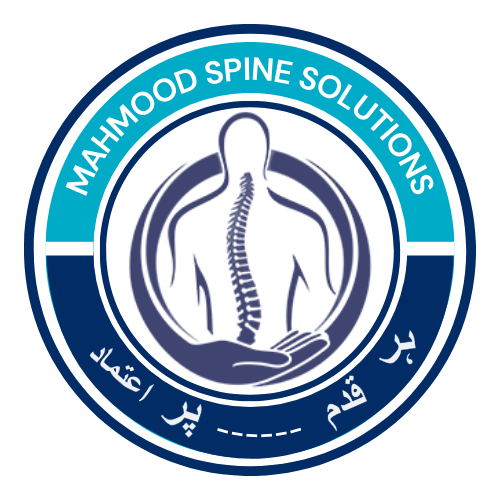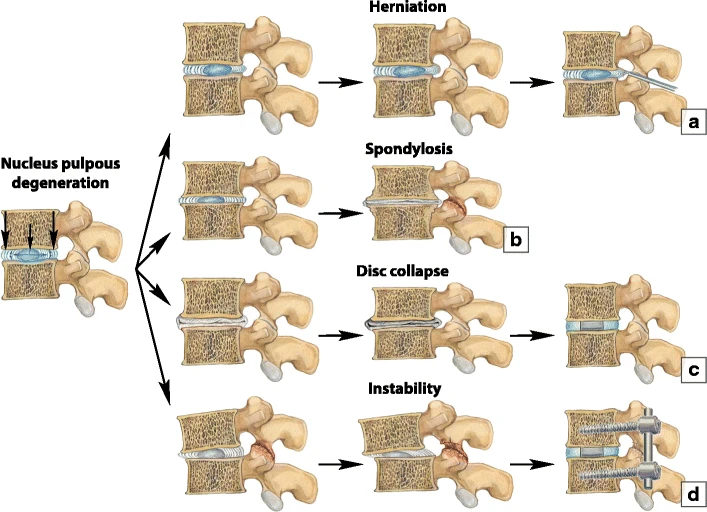Disc disease is a common condition that can impact your daily life, but with the right information and support, it’s manageable. This guide explores the different types of disc disease, their causes, symptoms, and treatment options, empowering you to take control of your spinal health. With insights from experts and a focus on positive outcomes, let’s dive into understanding disc disease.
What is Disc Disease?
Disc disease refers to a group of conditions that affect the intervertebral discs—the soft, gel-like cushions between the vertebrae of the spine. These discs absorb shocks and allow for flexibility. When these discs become damaged or deteriorate, it can lead to pain, reduced mobility, and other complications.
Types of Disc Disease
1. Herniated Disc (Slipped Disc)
A herniated disc occurs when the inner core of the disc (nucleus pulposus) pushes through a tear in the outer layer (annulus fibrosus). This can press on nearby nerves, causing pain and discomfort.
- Causes: Heavy lifting, trauma, or natural aging.
- Symptoms: Pain in the back, neck, or limbs, often accompanied by numbness or weakness.
- Treatment: Physical therapy, anti-inflammatory medications, and in some cases, surgery.
2. Degenerative Disc Disease (DDD)
Degenerative Disc Disease is a condition where the discs lose their flexibility and cushioning ability due to aging or wear and tear.
- Causes: Aging, repetitive strain, or genetic factors.
- Symptoms: Chronic back or neck pain, stiffness, and reduced mobility.
- Treatment: Exercise, physical therapy, pain management, and lifestyle modifications.
3. Bulging Disc
A bulging disc is when a disc protrudes out of its normal space but does not rupture. It may compress nerves, leading to discomfort.
- Causes: Aging, injury, or repetitive stress.
- Symptoms: Often asymptomatic, but can cause pain or numbness if pressing on nerves.
- Treatment: Non-surgical options like physical therapy, rest, and medication.
4. Sciatica
Sciatica is a symptom often caused by a herniated disc that irritates the sciatic nerve, leading to pain along the back of the leg.
- Causes: Herniated disc, bone spurs, or spinal stenosis.
- Symptoms: Sharp, shooting pain from the lower back to the leg, typically on one side.
- Treatment: Physical therapy, anti-inflammatory drugs, and sometimes surgery.
5. Spinal Stenosis
Spinal stenosis involves the narrowing of the spinal canal, which can put pressure on the spinal cord and nerves, often due to degenerative changes.
- Causes: Aging, arthritis, or disc degeneration.
- Symptoms: Pain, numbness, or weakness in the back, neck, or limbs.
- Treatment: Physical therapy, medications, and surgical options for severe cases.
6. Spondylolisthesis
Spondylolisthesis occurs when one vertebra slips forward over the one below it, often due to disc degeneration or congenital issues.
- Causes: Aging, injury, or congenital conditions.
- Symptoms: Lower back pain, stiffness, and nerve-related symptoms like numbness or weakness.
- Treatment: Physical therapy, pain relief medications, and surgery if necessary.
Managing Disc Disease
While disc disease can be challenging, many treatment options and lifestyle changes can help manage symptoms and improve quality of life.
1. Stay Active
Engage in regular, low-impact exercises such as swimming, walking, or yoga to strengthen the muscles around the spine. This can reduce the strain on your discs and improve overall spinal health.
2. Maintain a Healthy Weight
Excess weight puts additional pressure on your spine, which can accelerate disc degeneration. A balanced diet and regular exercise can help manage your weight and reduce the strain on your back.
3. Practice Good Posture
Proper posture reduces the stress on your spine and discs. Ensure your workspaces are ergonomic, and be mindful of your posture during daily activities.
4. Avoid Smoking
Smoking reduces blood flow to the discs, hindering their ability to heal and increasing the risk of disc degeneration. Quitting smoking can improve overall disc health.
5. Nutrition
A diet rich in essential nutrients, such as calcium and vitamin D, supports bone and disc health. Hydration is also crucial, as the discs need water to maintain their cushioning ability.
When to See a Doctor
If you experience persistent back pain, numbness, or weakness that interferes with your daily life, it’s crucial to consult a healthcare professional. Early diagnosis and treatment can prevent the condition from worsening and improve your quality of life.
For expert care, consider Dr. Mahmood Ahmad, a highly qualified spine surgeon with extensive experience in treating various types of disc diseases. Dr. Ahmad provides compassionate, comprehensive care tailored to each patient’s needs. You can visit him at:
Dr. Mahmood Ahmad
Razia Saeed Hospital
17-E Near Eid Gah, Chowk, Officers Colony, Multan, Punjab
Phone: 0300 0777790
Email: [email protected]
Visit Website
Consulting with a specialist like Dr. Mahmood Ahmad can help you get a precise diagnosis and effective treatment plan, ensuring you receive the best possible care for your spinal health.
Frequently Asked Questions
Q1: What are the most common symptoms of disc disease?
A: Common symptoms include back or neck pain, numbness, tingling, and weakness in the arms or legs.
Q2: Can disc disease be prevented?
A: While you can’t entirely prevent disc disease, maintaining a healthy lifestyle, staying active, and practicing good posture can significantly reduce your risk.
Q3: Is surgery always required for disc disease
A: No, most cases are managed with non-surgical treatments such as physical therapy, medication, and lifestyle changes. Surgery is usually considered when conservative treatments fail.
Q4: How does aging affect the discs?
A: Aging can cause the discs to lose water content, leading to reduced flexibility and cushioning ability, which can result in disc degeneration and related conditions.
Q5: What’s the difference between a herniated and a bulging disc?
A: A herniated disc involves a tear in the outer layer, allowing the inner core to protrude, while a bulging disc means the disc is extending beyond its normal space but without a tear.
Final Thoughts
Disc disease may sound daunting, but with the right approach, it is manageable. Understanding the types of disc disease, their causes, and treatment options empowers you to take control of your spinal health. Whether through lifestyle changes, physical therapy, or medical interventions, there are numerous ways to alleviate symptoms and improve your quality of life. Trust in the expertise of healthcare professionals, stay proactive, and focus on maintaining a healthy, active lifestyle for a pain-free future.




